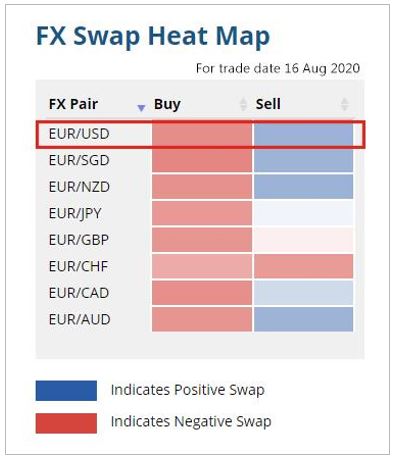
What is call meaning in stock market? A call is a type of option in which the buyer of the option makes a bet on whether a stock will increase or decrease. The buyer of a call option buys the right to purchase Apple stock for $145. However, the buyer is not obligated to buy the stock if it doesn't increase.
Short-term call position
A short call position on the stock market is different than a long option. A long call trader might be able to sell shares if the price rises but a shorter call trader must keep a bearish view of the underlying stock. Because the underlying stock's price can rise to infinity, the short call trader will lose his or her investment. But, the short call trader would still have a hundred short shares.

Strike price of a Call Option
Strike price of a call option in the stock market is the price at which a buyer can exercise the option and buy the underlying security. The buyer is obliged to close the transaction within the deadline. A seller of a call option must have the ability to execute the option. Call sellers predict that the underlying share price will either remain the same or decrease. The option buyer will get cash if the price of the underlying share rises above its strike price.
Time value
The time value for a call option refers to the premium paid by the investor above the intrinsic price of the stock or futures contract at expiration. It reflects the investor's hope that the asset's value will increase before the expiration date. The higher the time value, the longer the period. Other factors such as dividends or risk-free interest rates have a smaller impact on the time value than does the intrinsic value.
Exercise of a called option
Exercise of a call option in the stock market is a process by which a buyer acts upon his or her right to convert an option into the underlying stock. This action will burn any extrinsic value of the option. Another option is for the call option to be sold and the extrinsic to be returned to the market. It yields a similar result. However, before you decide on which option to exercise make sure to understand its limitations as well as the potential risks.

Time value for a put option
A put option refers to an investment in stocks that pays a premium whenever the stock price drops. In other words, if XYZ stocks go down by 50%, the seller will get $200, while the buyer will only get $45 if the stock stays above the strike price. This strategy is risky and should only be used if a person doesn't have the cash to buy a stock. The downside to a put is the fact that it has very little upside. A buyer of a put can lose up to the total cost of the put. Depending on the stock's volatility, a put buyer can lose up to his or her initial investment and even all of their profits.
FAQ
What is a REIT and what are its benefits?
A real estate investment Trust (REIT), or real estate trust, is an entity which owns income-producing property such as office buildings, shopping centres, offices buildings, hotels and industrial parks. They are publicly traded companies which pay dividends to shareholders rather than corporate taxes.
They are similar in nature to corporations except that they do not own any goods but property.
What is a bond?
A bond agreement is an agreement between two or more parties in which money is exchanged for goods and/or services. It is also known by the term contract.
A bond is typically written on paper, signed by both parties. This document details the date, amount owed, interest rates, and other pertinent information.
The bond can be used when there are risks, such if a company fails or someone violates a promise.
Bonds can often be combined with other loans such as mortgages. The borrower will have to repay the loan and pay any interest.
Bonds can also help raise money for major projects, such as the construction of roads and bridges or hospitals.
A bond becomes due upon maturity. That means the owner of the bond gets paid back the principal sum plus any interest.
Lenders are responsible for paying back any unpaid bonds.
What is the difference of a broker versus a financial adviser?
Brokers specialize in helping people and businesses sell and buy stocks and other securities. They take care of all the paperwork involved in the transaction.
Financial advisors can help you make informed decisions about your personal finances. They help clients plan for retirement and prepare for emergency situations to reach their financial goals.
Banks, insurers and other institutions can employ financial advisors. They may also work as independent professionals for a fee.
Consider taking courses in marketing, accounting, or finance to begin a career as a financial advisor. Additionally, you will need to be familiar with the different types and investment options available.
How does inflation affect stock markets?
Inflation is a factor that affects the stock market. Investors need to pay less annually for goods and services. As prices rise, stocks fall. It is important that you always purchase shares when they are at their lowest price.
What is a Mutual Fund?
Mutual funds are pools or money that is invested in securities. They provide diversification so that all types of investments are represented in the pool. This reduces the risk.
Professional managers manage mutual funds and make investment decisions. Some funds offer investors the ability to manage their own portfolios.
Most people choose mutual funds over individual stocks because they are easier to understand and less risky.
Is stock marketable security a possibility?
Stock can be used to invest in company shares. This is done via a brokerage firm where you purchase stocks and bonds.
You could also choose to invest in individual stocks or mutual funds. There are more than 50 000 mutual fund options.
These two approaches are different in that you make money differently. Direct investment allows you to earn income through dividends from the company. Stock trading is where you trade stocks or bonds to make profits.
In both cases, you are purchasing ownership in a business or corporation. You become a shareholder when you purchase a share of a company and you receive dividends based upon how much it earns.
Stock trading offers two options: you can short-sell (borrow) shares of stock to try and get a lower price or you can stay long-term with the shares in hopes that the value will increase.
There are three types: put, call, and exchange-traded. Call and Put options give you the ability to buy or trade a particular stock at a given price and within a defined time. ETFs, also known as mutual funds or exchange-traded funds, track a range of stocks instead of individual securities.
Stock trading is very popular since it allows investors participate in the growth and management of companies without having to manage their day-today operations.
Although stock trading requires a lot of study and planning, it can provide great returns for those who do it well. If you decide to pursue this career path, you'll need to learn the basics of finance, accounting, and economics.
Statistics
- "If all of your money's in one stock, you could potentially lose 50% of it overnight," Moore says. (nerdwallet.com)
- US resident who opens a new IBKR Pro individual or joint account receives a 0.25% rate reduction on margin loans. (nerdwallet.com)
- The S&P 500 has grown about 10.5% per year since its establishment in the 1920s. (investopedia.com)
- Ratchet down that 10% if you don't yet have a healthy emergency fund and 10% to 15% of your income funneled into a retirement savings account. (nerdwallet.com)
External Links
How To
How to Trade on the Stock Market
Stock trading is the process of buying or selling stocks, bonds and commodities, as well derivatives. Trading is French for traiteur. This means that one buys and sellers. Traders sell and buy securities to make profit. This is the oldest form of financial investment.
There are many methods to invest in stock markets. There are three main types of investing: active, passive, and hybrid. Passive investors do nothing except watch their investments grow while actively traded investors try to pick winning companies and profit from them. Hybrid investor combine these two approaches.
Passive investing is done through index funds that track broad indices like the S&P 500 or Dow Jones Industrial Average, etc. This approach is very popular because it allows you to reap the benefits of diversification without having to deal directly with the risk involved. You just sit back and let your investments work for you.
Active investing is about picking specific companies to analyze their performance. The factors that active investors consider include earnings growth, return of equity, debt ratios and P/E ratios, cash flow, book values, dividend payout, management, share price history, and more. They will then decide whether or no to buy shares in the company. If they feel the company is undervalued they will purchase shares in the hope that the price rises. However, if they feel that the company is too valuable, they will wait for it to drop before they buy stock.
Hybrid investment combines elements of active and passive investing. Hybrid investing is a combination of active and passive investing. You may choose to track multiple stocks in a fund, but you want to also select several companies. This would mean that you would split your portfolio between a passively managed and active fund.